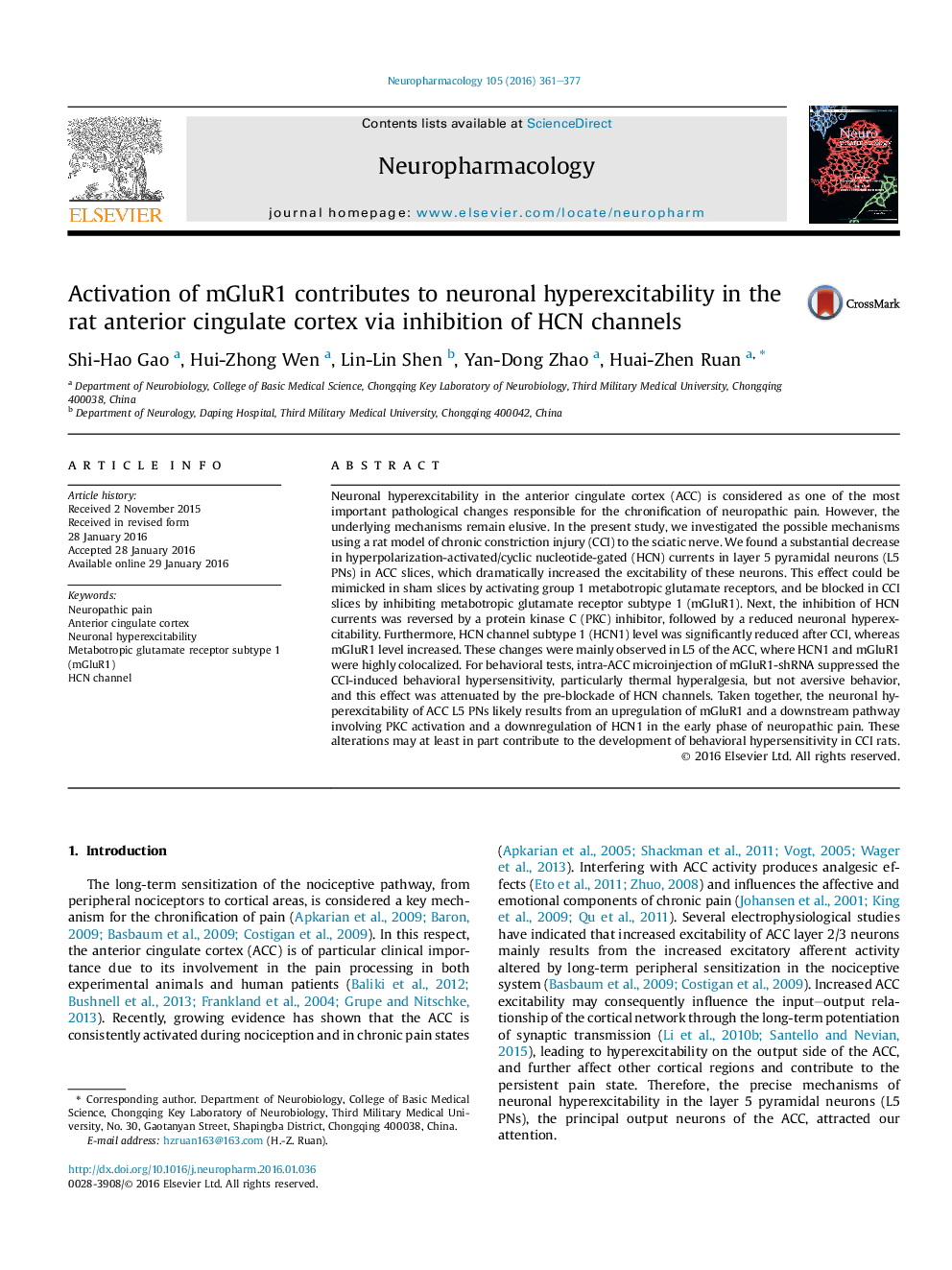| Article ID | Journal | Published Year | Pages | File Type |
|---|---|---|---|---|
| 5813367 | Neuropharmacology | 2016 | 17 Pages |
Abstract
Neuronal hyperexcitability in the anterior cingulate cortex (ACC) is considered as one of the most important pathological changes responsible for the chronification of neuropathic pain. However, the underlying mechanisms remain elusive. In the present study, we investigated the possible mechanisms using a rat model of chronic constriction injury (CCI) to the sciatic nerve. We found a substantial decrease in hyperpolarization-activated/cyclic nucleotide-gated (HCN) currents in layer 5 pyramidal neurons (L5 PNs) in ACC slices, which dramatically increased the excitability of these neurons. This effect could be mimicked in sham slices by activating group 1 metabotropic glutamate receptors, and be blocked in CCI slices by inhibiting metabotropic glutamate receptor subtype 1 (mGluR1). Next, the inhibition of HCN currents was reversed by a protein kinase C (PKC) inhibitor, followed by a reduced neuronal hyperexcitability. Furthermore, HCN channel subtype 1 (HCN1) level was significantly reduced after CCI, whereas mGluR1 level increased. These changes were mainly observed in L5 of the ACC, where HCN1 and mGluR1 were highly colocalized. For behavioral tests, intra-ACC microinjection of mGluR1-shRNA suppressed the CCI-induced behavioral hypersensitivity, particularly thermal hyperalgesia, but not aversive behavior, and this effect was attenuated by the pre-blockade of HCN channels. Taken together, the neuronal hyperexcitability of ACC L5 PNs likely results from an upregulation of mGluR1 and a downstream pathway involving PKC activation and a downregulation of HCN1 in the early phase of neuropathic pain. These alterations may at least in part contribute to the development of behavioral hypersensitivity in CCI rats.
Related Topics
Life Sciences
Neuroscience
Behavioral Neuroscience
Authors
Shi-Hao Gao, Hui-Zhong Wen, Lin-Lin Shen, Yan-Dong Zhao, Huai-Zhen Ruan,
